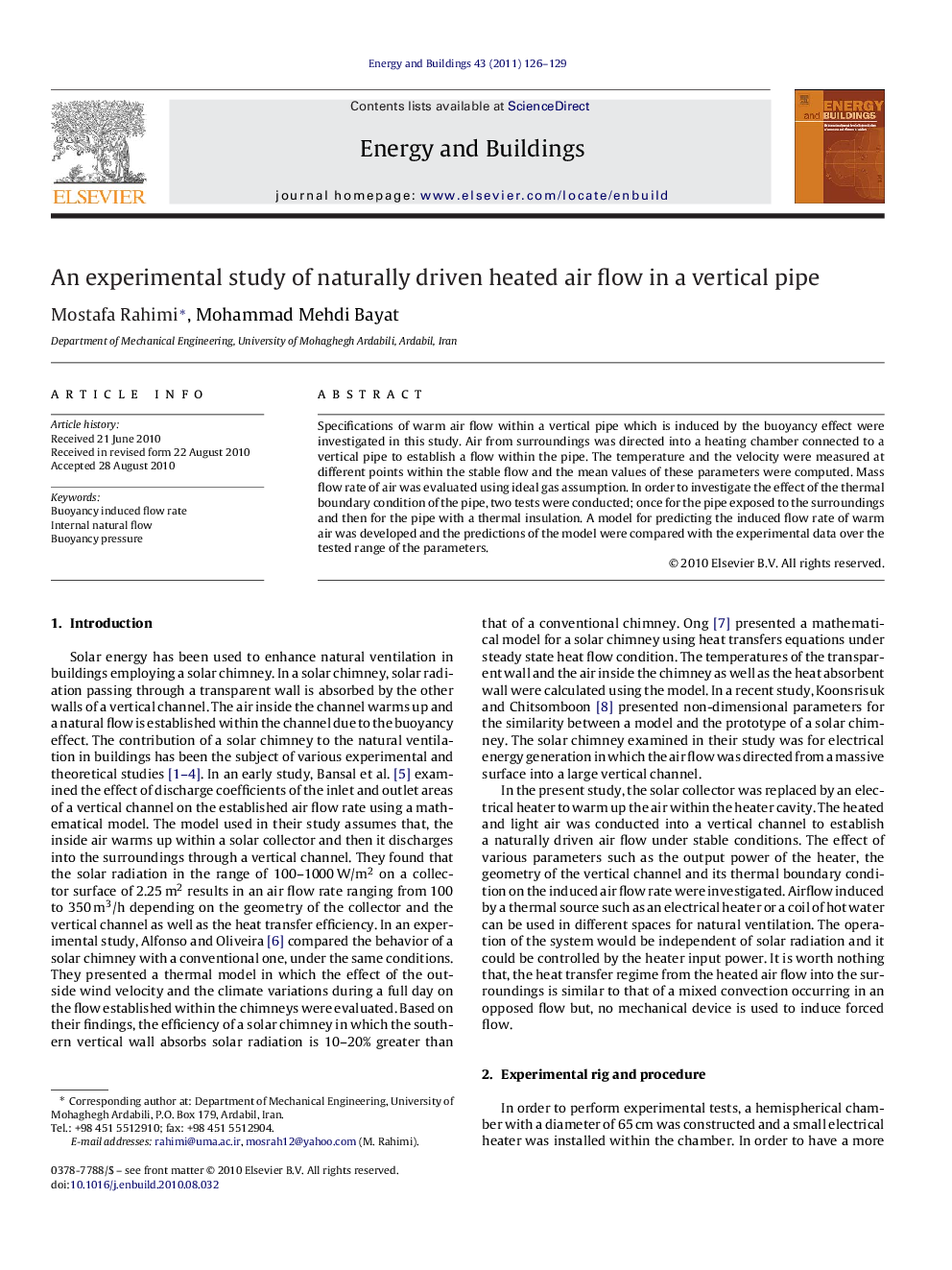| Article ID | Journal | Published Year | Pages | File Type |
|---|---|---|---|---|
| 264454 | Energy and Buildings | 2011 | 4 Pages |
Specifications of warm air flow within a vertical pipe which is induced by the buoyancy effect were investigated in this study. Air from surroundings was directed into a heating chamber connected to a vertical pipe to establish a flow within the pipe. The temperature and the velocity were measured at different points within the stable flow and the mean values of these parameters were computed. Mass flow rate of air was evaluated using ideal gas assumption. In order to investigate the effect of the thermal boundary condition of the pipe, two tests were conducted; once for the pipe exposed to the surroundings and then for the pipe with a thermal insulation. A model for predicting the induced flow rate of warm air was developed and the predictions of the model were compared with the experimental data over the tested range of the parameters.
Research highlights▶ In a buoyancy induced air flow within a vertical pipe, the mass flow rate increase as the length of the pipe is enlarged. ▶ In a buoyancy induced air flow within a vertical pipe, the mass flow rate is almost constant for extremely large length of the pipe. ▶ In a buoyancy induced air flow within a vertical pipe, the mass flow rate is maximum where the mean temperature of the flow is 1.5 times greater than the surroundings temperature.
